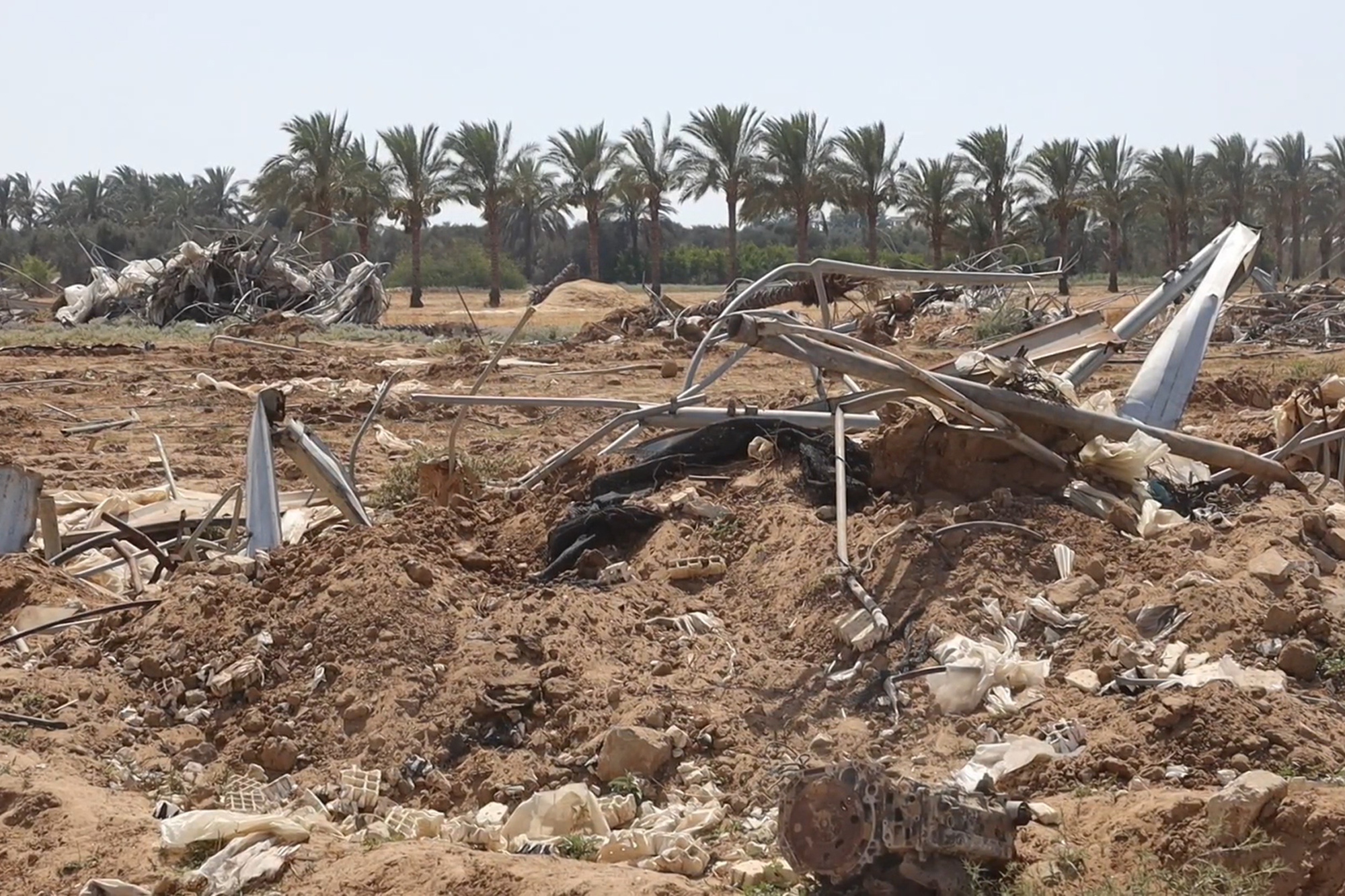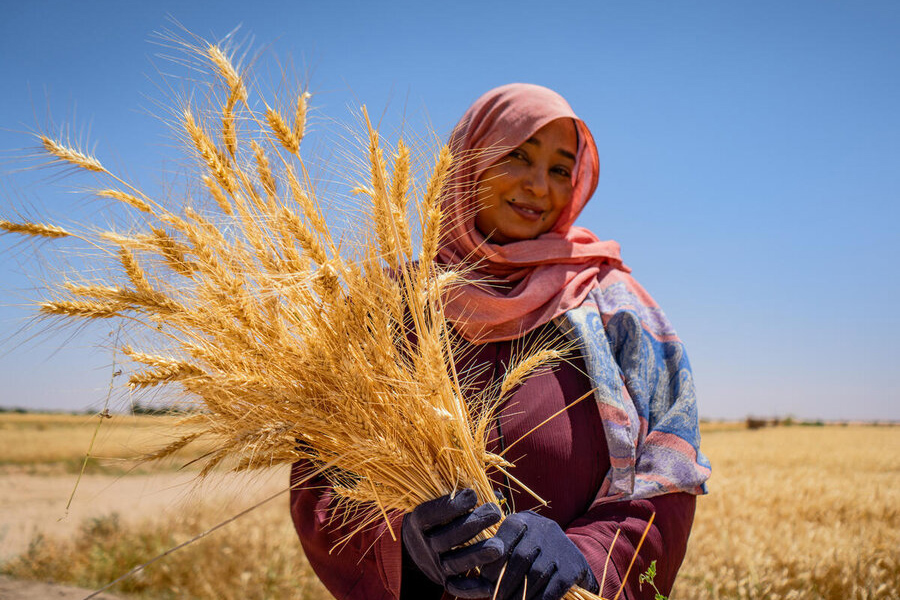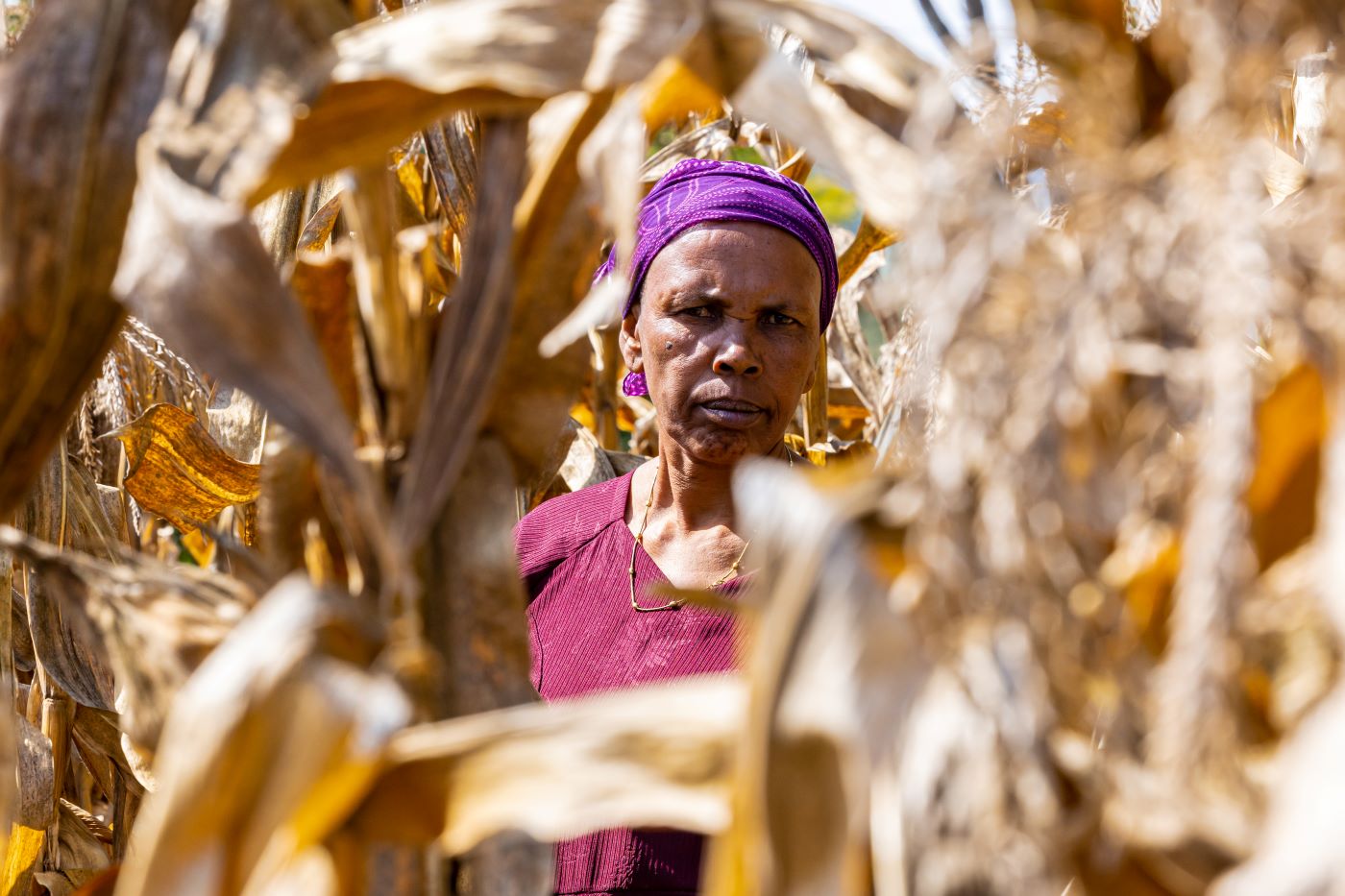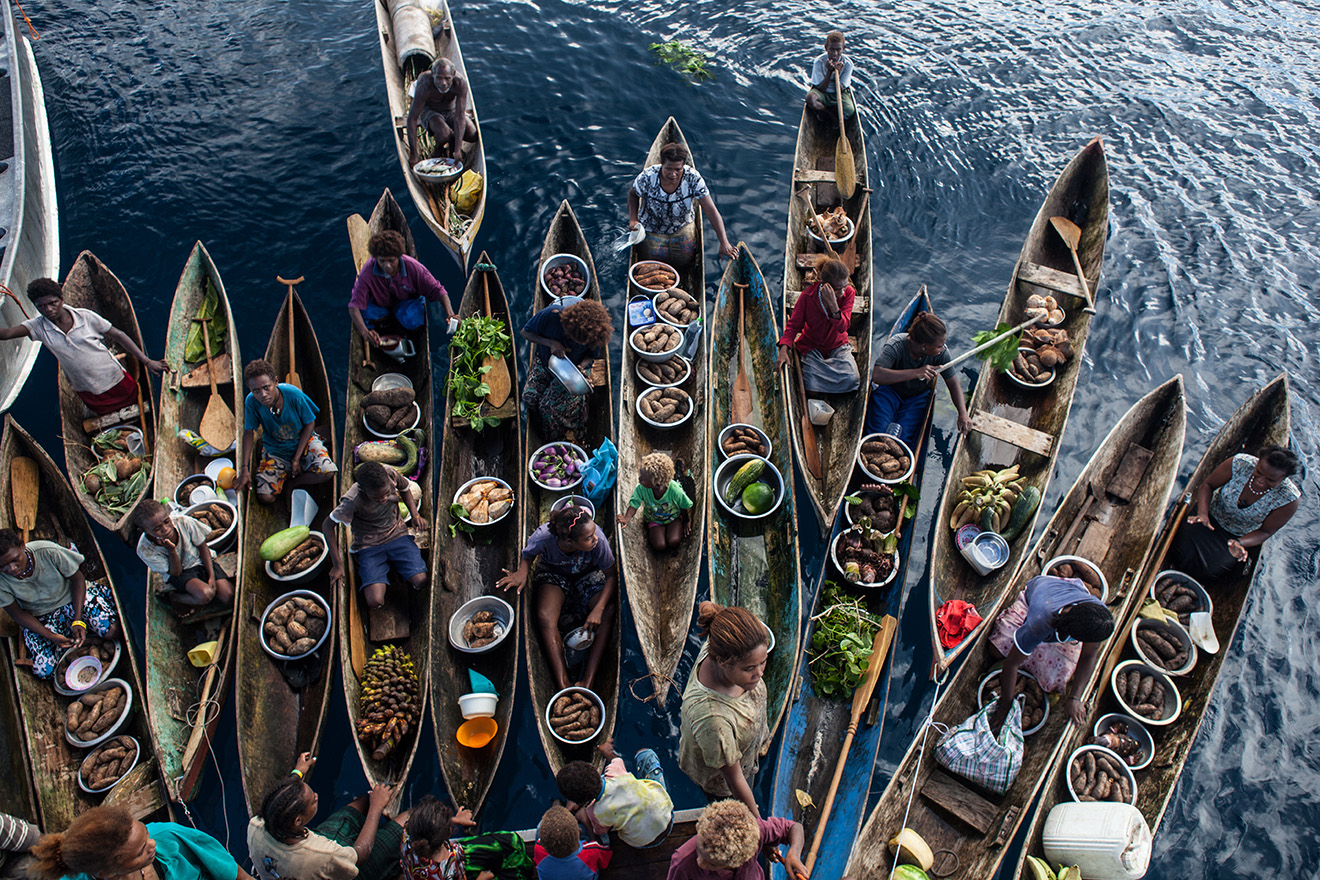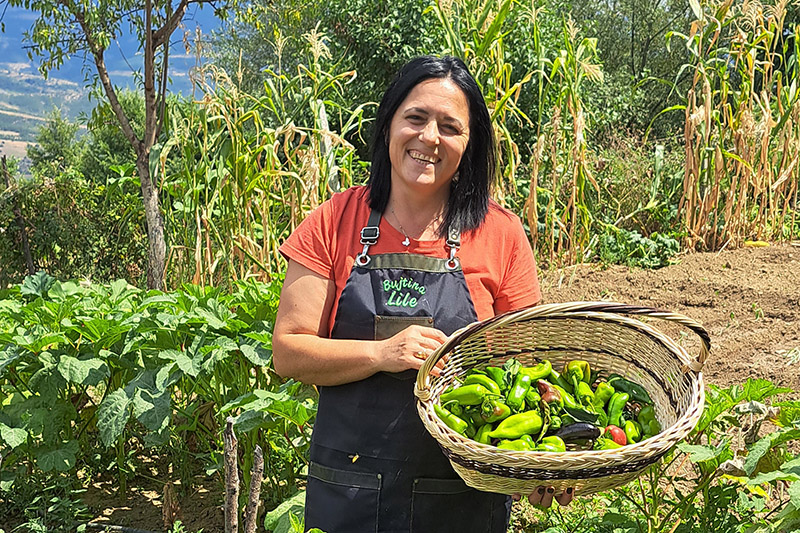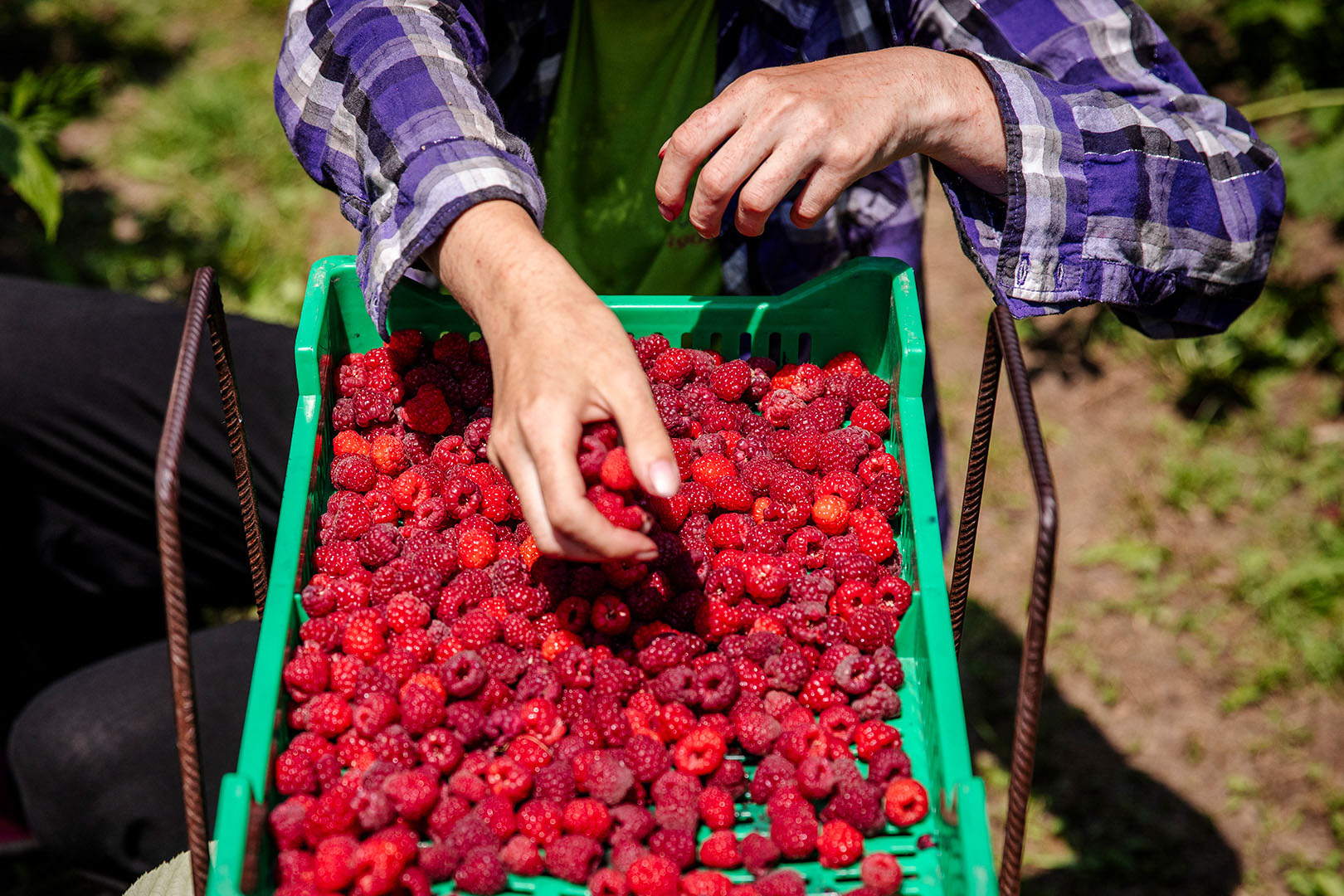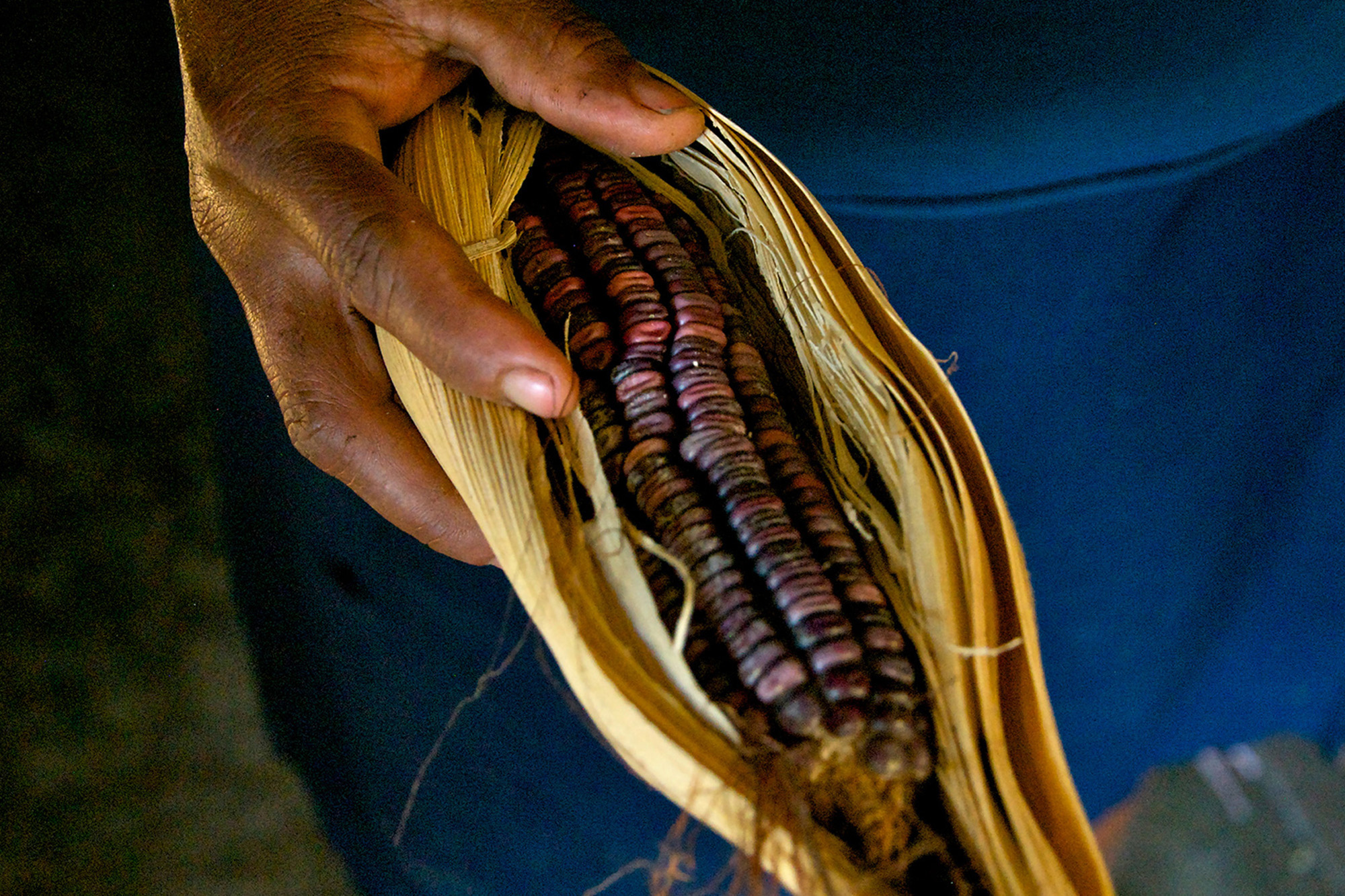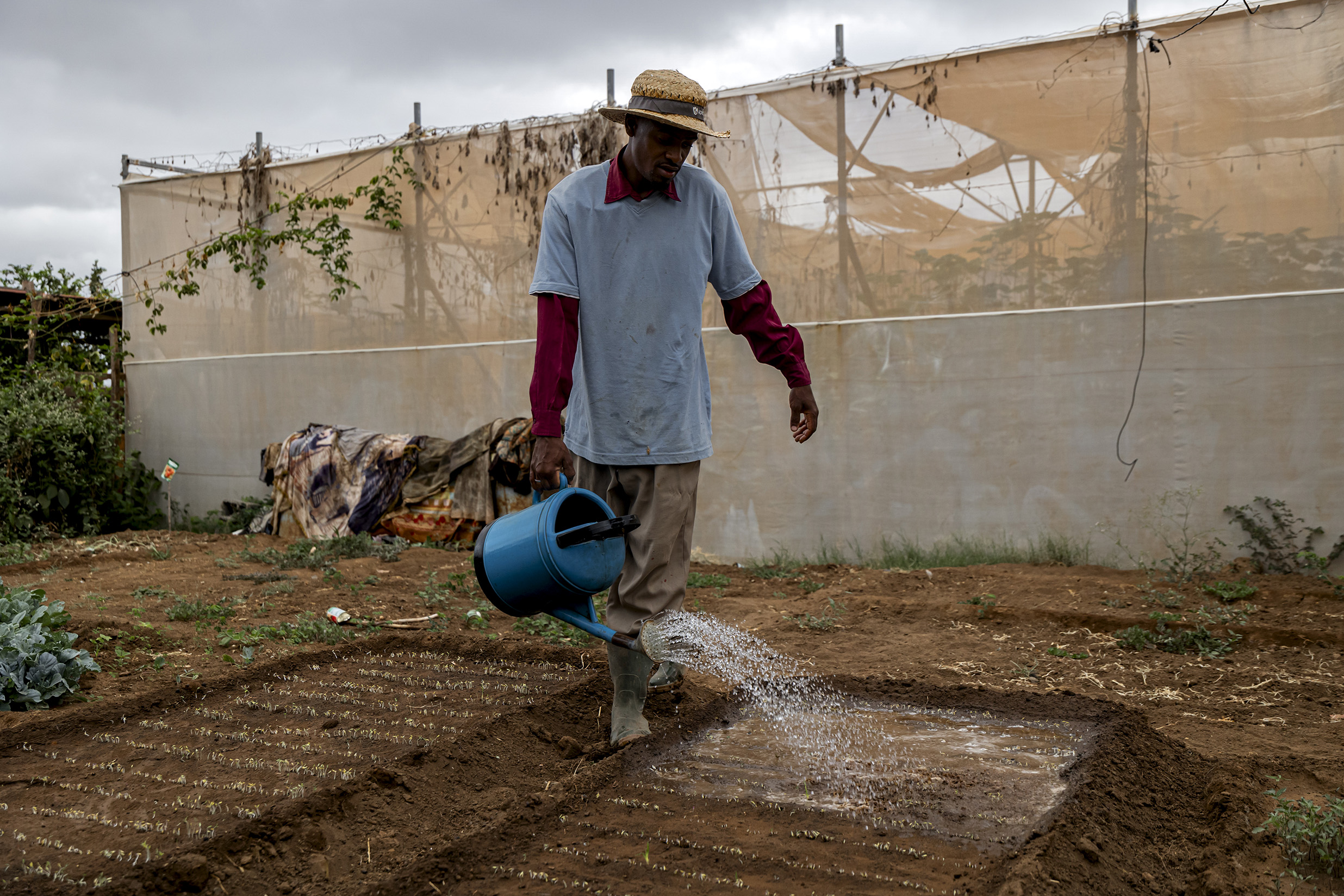A recent satellite analysis by the Food and Agriculture Organization of the United Nations (FAO) reports widespread damage to agricultural infrastructure across Gaza, including damage to over 57 percent of total cropland, the destruction of 33 percent of greenhouses and significant losses in wells and solar panels. Farmers like Yousef Al-Masri and Mohamed El Yaty are essential to Gaza's food supply. However, they and other farmers, herders and fishers in the Gaza Strip are struggling to maintain their agricultural assets, sources of nutrition and income due to the escalation of hostilities and lack of availability and access to critical agricultural inputs.
Agriculture and Food
Farmer Tawfik's olive trees thrive thanks to a 100% natural compost created from Aleppo pine cones, supported by IFAD and the Tunisian government.
The emergency wheat production initiative in Sudan, implemented by the World Food Programme, has significantly boosted wheat production and provided crucial support to farmers, especially those displaced by the ongoing conflict.
Hunger is not driven by a lack of food or an inability to grow it. Instead, it is primarily caused by conflict, climate change and economic fluctuations. For the 733 million people who were hungry in 2023, this truth must be hard to accept. The latest State of Food Security and Nutrition in the World Report states that we have the means to end hunger and malnutrition by 2030 – but we are missing the money and the political will to do so. The world needs increased and more cost-effective financing. But there are already financing solutions that could be rolled out on a larger scale for greater impact, posits IFAD.
Around 733 million people faced hunger in 2023, equivalent to one in eleven people globally and one in five in Africa. The 2024 State of Food Security and Nutrition in the World (SOFI) report is clear: the world is falling significantly short of achieving our goal of Zero Hunger by 2030. Current financing levels are inadequate and often inefficient. We need innovative financing to build resilience in our agrifood systems and ensure equitable access to healthy diets. The report, published jointly by five UN agencies, provides updated analyses and recommendations to guide global actions.
As the sun rises over Pemba Island in Tanzania, Shajia and other seaweed farmers head towards the water to harvest their seaweed at low tide. When Shajia first started farming seaweed in 1995, she did it largely along the shore. In the decades since, conditions have changed. “Due to the high temperatures caused by climate change, the seaweed was not doing well on the shores,” she explains. “We were forced to go deeper into the ocean.” The IFAD-supported LDFS project is helping Shajia adapt to the new normal. As well as receiving equipment, she’s learned how to grow seaweed along ropes. This ensures a plentiful harvest that is easier to gather and is protected from the tides.
Gita Adikhari realised something significant had changed when her farm in the Jhapa District of eastern Nepal yielded nearly double the amount she would normally harvest. The bumper crop was a result of learnings from a Farmer Field School run by the Food and Agriculture Organization of the United Nations (FAO) with funding from the Green Climate Fund. An overarching aim of the learnings is to make farming systems more resilient to climate change. Farmer Field Schools are also about boosting the confidence of women farmers, who traditionally have not had a voice in household or community decisions. Gita feels that this has changed and now shares her opinions and gets involved in the community.
Due to the decreasing availability of pasture brought on by worsening drought in the southern Gobi region, camels are producing less milk, causing difficulties for herders who rely on this for income and nutrition. The herder communities in Mongolia, traditionally, do not feed their camels with any supplemental feed and only hand-milk their camels. But now with the knowledge and resources from An EU-funded project, implemented by FAO, camel herders have witnessed the increased production in milk from supplemental feed. Milking equipment has also increased quality in milk production.
In Brazil’s semi-arid northeast, farming faces significant challenges due to climate change. Erratic rainfall and shifting harvest periods impact the region. Soil degradation prevents it from retaining water, nutrients, and microorganisms. To cope, farmers often overuse fertilizers, pesticides, and scarce water, perpetuating a damaging cycle. However, micro-, small, and medium-sized enterprises (MSMEs) in Rio Grande do Norte are making a difference. Tiago José Souza, a Cooperxique Cooperative member, practices agroecology to boost productivity while nurturing the soil. The cooperative’s organic certification programme ensures high standards without costly private certification.
In Albania, agritourism is flourishing, driven by the stunning Vjosa Wild River National Park and its untamed river valleys. The Lile family farm and restaurant, located near the Bënja thermal baths, offers Albanian and Greek cuisine, wine, and traditional raki. With tourism doubling from 2016 to 2023, there’s a growing demand for quality local food and services. By fostering agritourism, Albania aims to create market opportunities and boost rural development, addressing interrelated sectors like agriculture, tourism, and culture. FAO is supporting the country’s vision for improving its agrifood system and increasing prosperity in rural areas.
Ariljska malina, a plump, vibrantly coloured raspberry, is one of Serbia’s crown jewels. Farmers in the region developed a now decades-old growing and harvesting technique that, along with the area’s microclimate, contributes to the raspberry’s taste and quality. The raspberry is the area’s only commercial product, driving the area’s economic development. It is also one of more than 9,000 geographically protected foods worldwide, with geographical indication (GI) status. FAO and EBRD support to producers helps ensure continued promotion and protection of these products.
Burkina Faso's economy relies on subsistence agriculture, mainly cereals like sorghum, millet, corn, and rice, but faces challenges with low crop productivity due to land degradation in the northern Sahelian zone. In 2018, residents of Kirsi established the Wendpanga Simplified Cooperative to address land degradation and desertification with support from the Global Environment Facility (GEF) Small Grants Programme (SGP) and the United Nations Development Programme (UNDP). The cooperative, consisting of 180 members, has already reclaimed 260 hectares of degraded land using techniques such as the zaï, stone barriers, and half-moons.
Mexico's traditional multi-crop farming system, known as milpa, is vital to agrobiodiversity. It is the opposite of monoculture, with each family growing a variety of nutritious crops. However, the continued expansion of large-scale intensive farming practices is making communities more vulnerable to natural and economic shocks. The Food and Agriculture Organization of the United Nations (FAO) and other organizations are working to revive these traditional practices and promote diverse, nutritious foods to address nutrition and food security issues in Mexico.
Potatoes are a key crop across agrifood systems globally, ranging from smallholders producing diverse heirloom varieties by hand in the Andes, to vast commercial, mechanized farms in different continents. As the third most available food crop globally, potatoes contribute to the food security, livelihoods and employment of people in rural and urban areas the world over. On 30 May, we spotlight the potato, Solanum tuberosum (L.) – a crop regularly consumed by billions of people.
The Day is an opportunity to build on the International Year of the Potato, which was observed in 2008.
In Cabo Verde, a Small Island Developing State, climate change has intensified the impact of droughts. Despite its name, Cabo Verde (“Green Cape”) faces a brutal dry season that turns it into shades of light brown. Farmers like Willy Gonçalves rely on desalinized water due to decreased precipitation. Willy, who took over from his neighbor Nena, manages a farm where he plants seedlings with love and determination. The increasing temperatures and water scarcity pose challenges, but Willy is coping with the help of training from the FAO-China South-South Cooperation (SSC) Programme.

